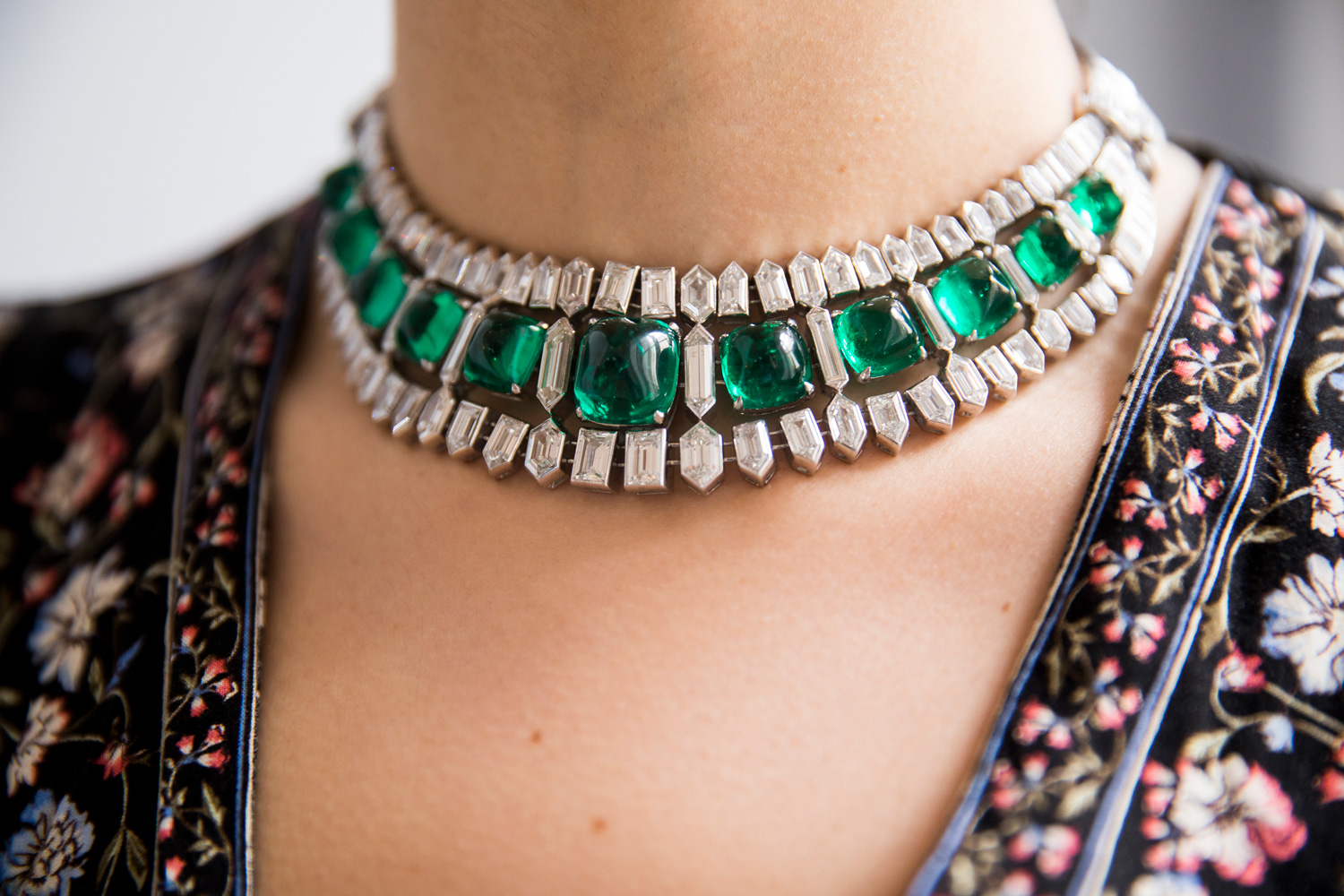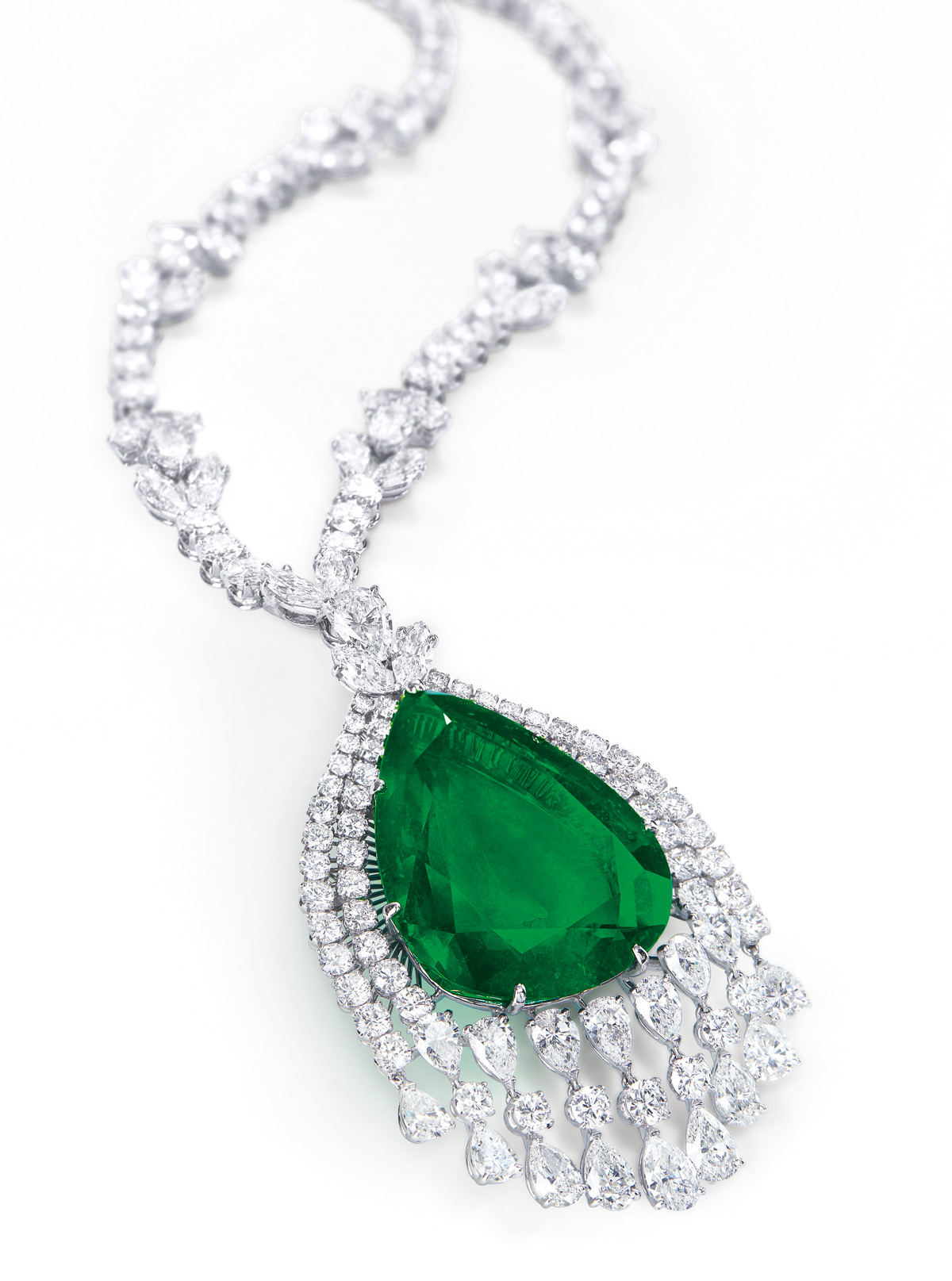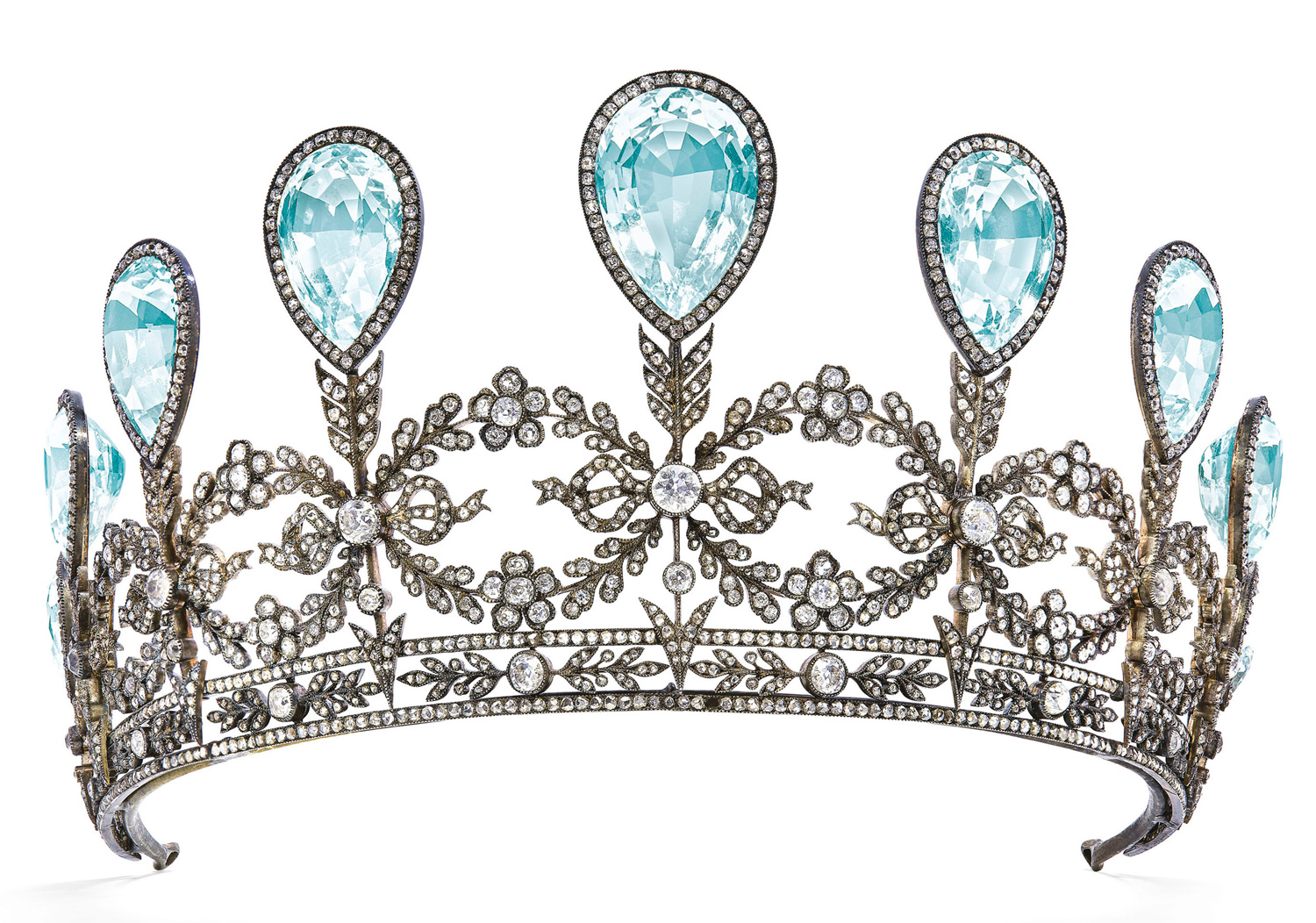There are many factors that make a jewel rare, but two things that can be contributing components to its desirability are a signature and provenance. A signed piece by a prestigious design house will often command more attention and more money. Provenance, or who once owned a jewel, is another factor that drives the allure of a piece. In their Geneva Magnificent Jewels auctions, both Christie’s and Sotheby’s offered up some spectacular jewelry that was made even more intriguing by their provenance. Here, we look at a few of the top-selling jewels from the sales and what made them worth it. Interestingly, three of the jewels in this blog are connected to the same royal family —Mecklenburg-Schwerin, a north German dynasty.

Sotheby’s sale was first and one of the outstanding items was the Beaumont Necklace, which sold for $3,593,900 [all prices include buyer’s premium]. Sotheby’s sold the same necklace in May 1994 for $1,167,730 in a sale dedicated to the Magnificent Jewels of Madame Hélène Beaumont. Its classic Art Deco design is as fresh today as when it was first created in the 1930s for the American socialite Hélène Beaumont, who lived a glamorous life that many only dream about. An opera singer, born Hélène Marguerite Thomas, she married one of the May Company founders, Louis Dudley Beaumont, in 1926. The couple lived the dolce vita at Villa Eilenroc on the Cap d’Antibes on the French Riviera, where they were among the first to establish the area as a haven for the well-heeled. They held lavish parties with a guest list that included the Duke and Duchess of Windsor and the Aga Khan. The couple was also known for their philanthropy, supporting a number of causes. Mrs. Beaumont needed jewelry to go with her opulent life and one of those jewels was the Beaumont Necklace, which is unsigned, but thought to have been made by Van Cleef & Arpels, a favorite jeweler of hers. The gems in the Beaumont Necklace are particularly special, showcasing 11 immaculate Colombian cabochon emeralds weighing over 75 carats, perfectly matched in color and proportions, a true rarity in the world of gemstones. The emeralds are punctuated by various fancy-shaped diamonds — baguette, dart and hexagonal — that create the strong, geometric forms that characterize Art Deco design. The central section of the necklace comes apart to form two bracelets. Its choker length fits perfectly with fashion today and its incredible gemstones will never go out of style.
“Tonight we saw the enduring appeal of outstanding Art Deco jewelry,” comments David Bennett, Sotheby’s worldwide jewelry chairman. “The Beaumont Necklace is “the Chrysler Building of jewelry,” instantly recognizable as an Art Deco masterpiece, and in my opinion, the greatest emerald and diamond necklace of the period. I had the privilege to sell it a quarter of a century ago and achieving this landmark result tonight is a further testament to its absolute and timeless beauty.”

On a royal note, a Fabergé diamond tiara, made for the last Crown Princess of Prussia, Duchess Cecilie von Mecklenburg-Schwerin, sold for $434,346. Known for her beauty, elegance and fashionable style, Cecilie was the youngest daughter of Grand Duke Frederick Francis III of Mecklenburg-Schwerin and Grand Duchess Anastasia Mikhailovna of Russia — remember these names, you’re going to hear more about this family as you read on. Gifted to Cecilie by her royal Russian relatives, the tiara was made for her June 1905 wedding to Crown Prince Wilhelm, son of Kaiser Wilhelm II. Fabergé was the favored jeweler of Grand Duchess Anastasia and there are letters she exchanged with the jeweler in the family archives referencing a diamond tiara. The wedding, held in Berlin, was a festive four-day affair with much pomp and circumstance. In 1906 there was a public display of wedding gifts that the couple received and the tiara was showcased in a Berlin newspaper article in March of that year.
“From portraits, we can see that she paired the tiara with her gowns in a very fashion-forward way for the very early 1900s. For so many collectors today — who seek out unique pieces with ‘soul’ — this jewel is really a masterpiece,” notes Daniela Mascetti, Sotheby’s jewelry chairman, Europe.

The next day at Christie’s, the Imperial Emerald of Grand Duchess Vladimir sold for $4,335,000, or $57,300 per carat. The pear-shaped emerald weighs 75.61 carats and was part of the Russian Imperial collection for over 100 years. In 1874 Tsar Alexander II of Russia gave the emerald to Duchess Marie of Mecklenburg-Schwerin when she married his son, Grand Duke Vladimir Alexandrovich of Russia. Upon her marriage, she became Grand Duchess Vladimir. When the Grand Duchess passed away in 1920, her jewelry was divided between her three children. Grand Duke Boris was bequeathed her emeralds, which included a rectangular-shaped, 107.67-carat emerald. In 1927, he sold it to Cartier and the design house remounted it into a diamond sautoir. It remained in the Cartier private collection until 1947. The emerald was then attached to a necklace that gem dealer Raphael Esmerian bought from the Payne Whitney family. In 1954, Esmerian recommended that the emerald be recut to improve its clarity. It proved to be good advice: The newly cut pear-shaped emerald weighed less, 75.63 carats, but its quality increased dramatically. It was once again attached to the diamond Payne Whitney necklace, which soon after was purchased by John D. Rockefeller Jr. In November 1971, it went on the block at an auction in Switzerland, where it was purchased by Raphael Esmerian. The emerald found its way into a private collection and stayed there until it recently resurfaced, weighing 75.61 carats with a contemporary diamond setting.
“The emerald was special not just for the provenance,” says Rahul Kadakia, international head of jewelry, Christie’s. “Its impressive size, perfect color and exceptional purity made it a true collectors gemstone.”

Tiaras were a necessity among royals of the early-twentieth century and Christie’s presented an aquamarine and diamond tiara by Fabergé, which sold for $1,035,000, more than doubling its presale estimate. “The Faberge tiara was a combination of delicate craftsmanship, a rare layout of beautifully colored pear-shaped aquamarines and of course the special provenance,” comments Kadakia.
This tiara, like the example sold earlier by Sotheby’s, was also a wedding gift, this time from Frederick Francis IV, Grand Duke of Mecklenburg-Schwerin to Princess Alexandra of Hanover and Cumberland. If this is all sounding a bit familiar, it should. It was at Frederick’s wedding that his sister Cecilie met her future husband, Crown Prince Wilhelm. Created in 1904, the aquamarine and diamond tiara has a very romantic theme filled with symbols of love. The design has forget-me-not flowers tied with ribbon bows that represent true and eternal love. They are pierced by arrows representing Cupid, symbolic of endearment, attraction and affection. The tiara showcases nine pear-shaped aquamarines in graduated sizes along with cushion and rose cut diamonds. It makes sense that Fabergé was the creator of the tiara, since as noted earlier in this blog, Frederick’s mother, Grand Duchess Anastasia Mikhailovna of Russia, favored the designer. The tiara was actually given to Alexandra after the wedding, which was held on June 7, 1904, because Fabergé had a little trouble completing the tiara on time. Somehow, the sketches of the tiara sent by Fabergé to the Grand Duchess to show her son disappeared. Without the sketches, Fabergé did not know which of his designs Frederick preferred. Two weeks before the wedding was to take place, Fabergé got a letter asking to have the tiara completed in time for the big event. Fabergé decided that he didn’t have enough time to make the tiara for the wedding. Alexandra ended up wearing a traditional Hanoverian nuptial crown for the wedding and received the aquamarine and diamond tiara from her husband as a wedding gift at a later date.

